#Leading English Daily among Bangladesh Newspapers
Text
Gas crisis hits industries
Gas crisis hits industries
The gas crisis is seriously affecting the country’s industries, including the export-oriented apparel and textile sectors, already struggling to cope with power cuts for a more than a week, besides the suspension of fertiliser production at two state-owned factories.
Leaders of the Bangladesh Knitwear Manufacturers and Exporters Association, the Bangladesh Textile Mills Association and apparel…
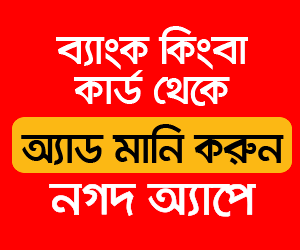
View On WordPress
#Bangla Online News#Bangladesh Latest News#Bangladesh News#Bangladesh Newspaper#Bangladeshi Newspapers#BD English Newspapers#BD Newspapers#Daily New Age#Daily New Age BD#Featured#Latest Bangladesh News#Leading English Daily among Bangladesh Newspapers#Most Popular Daily Newpaper in Bangladesh#Most Popular English Daily Newpaper in Bangladesh#Most Popular Outspoken English Daily Newpaper in Bangladesh#Most trusted Bangladesh Newspaper#New Age#New Age Bangladesh Newspaper#New Age BD#The Daily New Age#The Daily New Age BD#The New Age#The New Age BD
0 notes
Photo
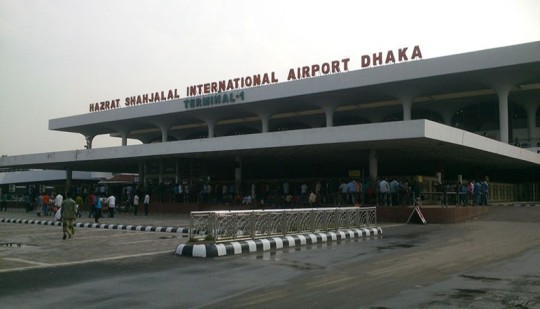
Three Japanese footballers to fly home today A few Japanese footballers, who were caught in Bangladesh soon after the suspension of Bangladesh Leading League due to coronavirus pandemic, will fly again home by a charter flight tonight.
#Bangla Online News#Bangladesh Latest News#Bangladesh News#Bangladesh Newspaper#Bangladeshi Newspapers#BD English Newspapers#BD Newspapers#Daily New Age#Daily New Age BD#fly#footballers#Home#Japanese#Latest Bangladesh News#Leading English Daily among Bangladesh Newspapers#Most Popular Daily Newpaper in Bangladesh#Most Popular English Daily Newpaper in Bangladesh#Most Popular Outspoken English Daily Newpaper in Bangladesh#Most trusted Bangladesh Newspaper#New Age#New Age Bangladesh Newspaper#New Age BD#The Daily New Age#The Daily New Age BD#The New Age#The New Age BD#Today
0 notes
Text
Kantipur

Kantipur
The Kantipur daily is the first private-run broadsheet daily in Nepal. Multiparty democracy had just been restored in the country when the paper rolled out in February 1993. Since then, the paper has striven to keep the public updated on current affairs, stir discussion and protect democratic values, including human rights and the rule of law. It is the go-to source for credible news, features and critical analysis. With a daily readership of 2.88 million Nepalis, Kantipur is the largest and the most influential daily in the country.
Since April 1993, the paper has been publishing a Saturday special called ‘Koseli’, in which readers can find feature articles, short stories, poetry and book reviews. Another weekend adjunct, ‘Kopila’ (first out in March 2001) focuses on stories about children for children. It tries to enhance children’s reading ability and creativity, and on increasing their access to information. The latest special feature to be incorporated is ‘Hello Shukrabar’ (since 2008), which tries to satiate the hunger for information of the young demographic.
Kantipur is concurrently published from Kathmandu, Biratnagar, Bharatpur, and Nepalgunj. Each of these regional offices produces their own regional editions. Outside the country, Kantipur publishes a weekly edition from Qatar, entitled ‘Kantipur Gulf Weekly’, (since January 2007). The weekly attempts to keep the growing Nepali diaspora in the Gulf countries informed about the latest developments in Nepal.
Kantipur has more than 100 reporters in all corners of the country. In India, the paper has a Delhi bureau, which reports on Nepal-India relations and on the issues of Nepalis in India. It also has dedicated reporters in Beijing, Hong Kong, Kuala Lumpur, Seoul, Sidney, Doha, Brussels, London and New York.
Kantipur has always fought to safeguard people’s right to right information. Its reportage have held the powerful accountable–whether it be during unlawful dissolutions of parliament or during autocratic times. Attempts to muzzle the paper, either through court suits and summons or through a blockade, have been made, but the paper has remained firm in its belief in freedom of expression and information. It vows to continue to perform the role of the fourth estate, with more substantial and investigative stories in the future.
Estd: 1993 A.D
Circulation: 4,48,000
Est. Readership: 28,80,000
Editor-in-Chief: Mr. Narayan Wagle
Web Portal: kantipurdaily.com
The Kathmandu Post
The Kathmandu Post, the country’s leading English-language daily, the Nepali-language and Nepal’s biggest-selling Kantipur daily were both launched in February 1993.The Post is the first private-run English-language broadsheet in the country and is credited with introducing the concept of news enterprise and breaking news in the nation. The Post is the second-most widely read paper in Nepal after the Kantipur daily.
The paper is considered one of the most reliable publications for news, opinion and original content. The newspaper’s Op-Ed section is widely followed and features columns by some of Nepal’s eminent intellectuals. The section also carries frequent write-ups from international scholars, leaders of non-governmental organisations, diplomats, and experts from various sectors.
It also carries content from leading foreign newspapers and news syndicates, such as the New York Times, the Guardian and Project Syndicate.
The newspaper is a member of Asia News Network (ANN), a coalition of leading English-language newspapers in the Asia Pacific region–Singapore’s The Straits Times, Malaysia’s Star, China Daily, Philippine Enquirer, Thailand’s The Nation, Jakarta Post, Bangladesh’s The Daily Star, among others, are ANN members. The Post runs a weekly ANN page and also features articles from ANN newspapers in its various daily sections.
Since its inception, the Post has experimented with ways to make diverse content available to its readers. Within a week of its launch, the Post produced a Friday supplement called ‘The Weekend Post’. Since July 2009, the paper has been producing a weekend supplement–‘On Saturday’–focusing on long-form journalism, satire and creative non-fiction articles. In August 2010, the Post rolled out a daily four-page pullout called ‘Money’, which is dedicated exclusively to business news. Apart from its regular pages and weekly supplements, the paper publishes yearly special issues, such as on the Gregorian New Year’s eve and on its birth anniversary in February.
A growing number of online team provides timely updates on news and events. Stories and articles published on the print version of the Post can also be read online. The paper is currently working to integrate its print and online teams.
With an estimated daily readership of 410,000, the Post has done to English-reading abilities of Nepalis what Kantipur has done to their Nepali. The Post has developed a new language to tell Nepal’s stories in English to both local and international audience.
The Post is published simultaneously from Kathmandu, Biratnagar, Bharatpur and Nepalgunj.
Estd: 1993 A.D
Circulation: 84,000
Est. Readership: 4,10,000
Editor-in-Chief: Mr. Anup Kaphle
Web Portal: kathmandupost.ekantipur.com
Saptahik
Saptahik was launched as a Friday supplement to the Kantipur daily in May 1995. Its objective was (and is) to focus on non-political stories–on entertainment, sports, education and career, science and technology, personality development, psychology, love and sex, relationships and marriage, fashion and celebrity lifestyle. The weekly–then 16-page long, with 4 of the pages in colour–became so successful that it soon became an independent entity under the umbrella of the Kantipur Media Group.
Saptahik is the first supplement of its kind in the country. It was the first paper that focused exclusively on youths, answered their queries, which were often taboo, and allowed them to tell their personal stories and connect with others. Sections such as ‘Patramitrata’, in which readers looking for pen pals sent a photo and a mailing address; ‘Jiwanko goreto’, in which readers wrote stories about what moved and haunted them; and ‘Sandesh’, where readers sent messages to people they could not talk to were extremely popular. So was the Q&A section (still in print) on sexual health.
Along with Kantipur and the Kathmandu Post, Saptahik is published from Kathmandu, Bharatpur and Biratnagar. With a readership of approximately 1.8 million Nepalis, Saptahik is the leading infotainment weekly in the country. When it comes to entertainment and glamour, Saptahik has the final say.

Estd: 1995 A.D
Circulation: 1,25,000
Est. Readership: 18,00,000
Editor-in-Chief: Mr. Subash Dhakal
Web Portal: saptahik.ekantipur.com
Nepal
Nepal, a weekly since 2000, was launched as a fortnightly magazine in July four years earlier. Its objective is to provide investigative reportage and deeper analyses of socio-political affairs. It is the largest selling news magazine in the country.
Each edition of Nepal offers incisive columns, satirical pieces on current affairs and trends, and lighter stories on lifestyle and arts. Nepal is known for its experimental bent and for its innovative approaches to presenting articles. The issues raised by and analysed in Nepal often become topics of national discussion, such as the story on surrogacy and the ‘new force’ in politics.
Two of Nepal’s most popular annual issues are ‘Person of the year’ and ‘+2 rankings’. In the ‘Person of the year’ issue, Nepal profiles a Nepali who has been the most influential in the country in that year. In ‘+2 rankings’, Nepal uses its own unique formula to rank colleges to help SLC graduates decide where to enrol for further studies.
Nepal embodies the ethos of the thinking Nepali who loves probing and engaging pieces on socio-political matters. It is the preferred magazine for the connoisseurs of intelligent commentary in the country.
Estd: 2000 A.D
Circulation: 45,000
Est. Readership: 3,15,000
Editor: Mr. Basanta Basnet
Web Portal: nepal.ekantipur.com
Nari
The origin of Nari is linked with the publication of a monthly called ‘Sarbottam’. Sarbottam was released in October 2002, with the objective of providing entertaining content from all over the world. Two years later, realising that the voice of Nepali women goes unheard, the magazine was turned into Sarbottam Nari. Since then, Nari has become the leading monthly dedicated solely to the Nepali woman.
The magazine covers a wide range of issues pertaining to Nepali women–from women’s rights and issues of empowerment to beauty, food, health and fashion. The objective is to cater to multiple personalities a woman embodies–a professional, a daughter, a wife, a mother and a homemaker, among others. The content ranges from perspectives on politics and society to profiles of successful women at regional and national level, to the nitty gritties of daily life, parenting issues, home-improvement ideas, the latest fashion tips, stories about arts and culture, views on movies and music, discussions on glamour and shopping, and advice on love and relationships.
Nari wants to help the culture of reading and writing flourish among Nepali women. It encourages female writers to contribute regular columns, urges in-house writers to quote female experts, gives priority to articles written by female writers and promotes articles written by men on women’s issues. The magazine wants to analyse the social, political and economic status of Nepali women, capture the essence of womanhood and fight for gender equality.
Nari is also available in Hongkong, Malaysia, Japan and Australia.
Read the full article
0 notes
Text
Muhammad Izhar ul Haq
Muhammad Izhar ul Haq, is a columnist and a renowned poet of Urdu language, in Pakistan. He has received international recognition for his contribution to Urdu literature, and has been awarded Pakistan’s highest civil award Pride of performance in 2008. He has published four books of Urdu poetry and writes weekly column in Daily Dunya
Personal life
Born on 14 Feb 1948 in the village Jhendial, in the district of Attock in Punjab, Muhammad Izhar ul Haq got his early education from his grandfather and father. His grandfather, Ghulam Muhammad, was a famous scholar and jurist of his time and was known to teach Persian literature and language. Muhammad Izhar ul Haq’s father, Hafiz Muhammad Zahoor ul Haq Zahoor, also a scholar of high repute, was author of a number of books in Persian and Urdu in poetry as well as prose.[1] Muhammad Izhar ul Haq topped in Government College Rawalpindi in graduation examination and was awarded Federal Government Inter-wing fellowship under which he did his MA Economics from Dhaka University. Later, he did MA in Arabic from Punjab University as external candidate and also learnt Uzbek language in Islamabad. In 1972, he joined the Civil Service of Pakistan after qualifying the Central Superior Services competitive examination. He ascended to the highest echelon of bureaucracy in the federal government, before retiring in 2008. Muhammad Izhar ul Haq has three sons and two daughters, and lives with Zahida Shaheen, his wife, in Islamabad and Melbourne.
Poetry
Muhammad Izhar ul Haq has four books of poetry to his credit:
Diwaar-e-aab (winner of Adamjee Award for Literature 1982)
Ghadr (1986)
Paree-zaad (1995)
Paani peh Bichha Takht (winner of Allama Iqbal Award 2003 [2])
Muhammad Izhar ul Haq is considered a trend-setter in modern Urdu Ghazal.[3] His first book, Diwaar-e-aab (1982) won Adam Jee award, the highest literary distinction at that time in the country. His two subsequent books in Urdu poetry, Ghadr and Paree-zaad hit the stalls in 1986 and 1995 respectively. His fourth book, Paani peh Bichha Takht, was conferred yet another honor, Dr. Allama Muhammad Iqbal award, in 2003. Izhar is best known in the genre of Ghazal, although his mastery in free-verse and prose-poem has also been established among the literary circles of South Asia.
Sample English translation of Izhar ul Haq's poetry can be read in the anthology "Pakistani Urdu Verse, Oxford University Press 2010", translated and edited by Yasmeen Hameed.[4]
Columns and other literary works
Izhar ul Haq writes columns in the leading Urdu newspapers of Pakistan and abroad. He has been a regular columnist in Jang, Daily Jinnah, Nawaiwaqt, and presently in Daily Dunya. Themes of his columns usually relate to politics and society, reform and development, religion, and ethics etc. Izhar ul Haq is noted for his unique style of literary prose and especially his command over classical Urdu and Persian literature. The title of his Urdu column is "Talkh Nawai", which translates to "bitter discourse". Izhar ul Haq is also an occasional contributor in The News (Jang group), The Bangladesh Today, The Age (Australia), and various other national and international newspapers. Izhar ul Haq has also contributed in the research for implementation of Urdu in Pakistan, with the National Language Authority. In addition, he has also contributed with the National Language Authority as one of the compilers of the Qaumi English-Urdu Dictionary. For his services to Urdu literature, Muhammad Izhar ul Haq was awarded Pride of Performance by the government of Pakistan in 2008.
#Yasmeen Hameed#Urdu poetry#Urdu#Pakistan#National Language Authority#Muhammad Izhar ul Haq#Muhammad Iqbal#Dhaka University#Daily Dunya
0 notes
Text
Indian Journalist’s Murder: The Ultimate Form of Press Censorship?
India's democracy is sinking? Hope not but it needs more than hope at this point to reset its course for democracy again.
Gauri Lankesh. Credit: Wikipedia
By Manipadma Jena
BHUBANESWAR, India, Sep 7 2017 (IPS)
Dauntlessly crusading against curbs on freedom of speech, fifty-five-year-old Indian journalist Gauri Lankesh was gunned down at her very doorstep in Bengaluru city on the evening of Sep. 5, taking three bullets of the seven fired in her lungs and heart. She was shot from just three feet away.
Known for her vocal stand against India’s growing right-wing ideology, communal politics and majoritian policies, Lankesh ran bold and forthright anti-establishment reports on the eponymous Gauri Lankesh Patrike, a regional language tabloid published, owned and edited by her since 2005."Gauri Lankesh’s death is another stark reminder of how violence is the new normal (in India)." --A senior journalist
She ran the paper only on subscriptions from loyal readers from across remote villages of Karnataka State. The paper carried no advertisements, following in the tradition of her socialist poet, playwright and journalist father who started the original tabloid.
Gauri Lankesh described herself on her Twitter handle as a journalist-activist. Fluent in both English and the regional Kannada language, she fearlessly broadcast her far-left of centre and pro-Dalit ideologies against religious fundamentalism and the caste system, reaching a huge mass grassroots population.
Speaking at her funeral, Karnataka’s chief minister M Siddaramaiah said, “Gauri brokered deals with Naxalites (Left-wing extremists) in Karnataka. She helped them enter the mainstream and played a vital role of a negotiator between the State and the extremists.” An activity which extremists cadres may have wanted to halt, Lankesh’s brother Indrajit Lankesh said today.
Known as a sympathizer of left-wing extremists, Lankesh was among the few who could empathise with the poverty, oppression and injustices that had pushed these people to pick up arms against the government.
In November, Lankesh was convicted in two libel suits filed by the ruling Bharatiya Janata Party (BJP) parliamentarians for her 2008 article alleging that they had criminal dealings. She was, however, granted bail and was planning to appeal to a higher court.
Majority of journalists killed wrote on politics and corruption
Lankesh’s voice being silenced once again highlights that journalists covering politics and corruption in India are most at risk of being silenced by killing.
Over half of the 27 journalists murdered in the country since 1992 were covering politics and corruption – the two beats most likely to provoke violent repercussions, finds the Committee to Protect Journalist (CPJ). The threat from these seems to be rising.
India continues to languish in the bottom third of the 2017 World Press Freedom Index, ranking 136th of 180 countries. Among India’s neighbours, most fare better, including conflict-torn Afghanistan at 120, Pakistan at 139, Sri Lanka at 141, , Bangladesh at 146, Nepal at 100, Bhutan at 84 and China at 176. Norway leads while North Korea is at the bottom.
The Index ranks countries according to the level of freedom available to journalists. It is a snapshot of the media freedom situation based on an evaluation of pluralism, independence of the media, quality of legislative framework and safety of journalists in each country.
Source: RSF
‘It is not what you said, but why you said it’
A friend of the slain journalist who was also from the media fraternity is quoted as saying that Lankesh was very “in your face” in her brand of progressive activism against radical Hinduism.
“In my frequent interactions with her, I would tell her that her whole rhetoric should be more subtle,” her friend says. “She was very naive and she was politically incorrect. She was very bold, but indulged in sloganeering of a certain kind which I said would not achieve anything. She needed to strategize.”
“Our right to dissent is being threatened,” the intrepid journalist said instead.
Bold red placards at her funeral read, “It is not what you said, but why you said it.”
“Given the ways in which speech is being stifled, dire days lie ahead,” Lankesh told an online portal a few months before her death, in an intuitive foretelling of her violent end.
She installed two closed circuit surveillance systems a fortnight before the fatal attack.
No link has yet been established between her death and her ideology or writing by police investigations, but because she so fiercely fought for freedom of speech and freedom of thought, large sections of Indian media protesting her killing are expressing concern over what they described as a growing intolerance of dissenting political voices.
A senior journalist sums up the current sentiment saying, “Gauri Lankesh’s death is another stark reminder of how violence is the new normal (in India). Alternate opinion is no longer debated, it is silenced.”
The Reporters without Borders (RSF) 2017 index report too blames the rise of Hindu nationalism for India’s drop in ranking.
“The three-year-old (federal) administration has been trying to banish all “anti-nationalist” discourse from the Indian press. Journalists who refuse to censor themselves are the targets of defamation suits or are prosecuted under section 124A of the penal code, under which “sedition” is punishable by life imprisonment, the organization reiterated today.”
Getting away with murder
Hundreds of journalists are murdered, but in nine out of 10 cases their killers go free.
India’s unsolved journalist murders rose by 24 percent within just one year, finds CPJ’s latest Global Impunity Index 2016 which documents the top countries where the killers of journalists go unpunished and where cases of journalists killed remain unsolved. In comparison, Syria is up 85 percent and Brazil 36
CPJ finds it is most often criminal and political groups, government officials in India who get away with journalist murders. Rural and small-town journalists reporting on local corruption, crime, and politics are targeted most. Worse, in addition to failing to solve any journalist murder, India has never responded to UNESCO’s requests for the judicial status of journalist killings in the country.
Impunity is widely recognized as one of the greatest threats to press freedom. The Impunity Index finds globally, 95 percent of victims were local reporters. More of them covered politics and corruption than any other beat. Also in 40 percent of cases, the victims reported receiving threats before they were killed. Threats however are rarely investigated by authorities and in only a handful of cases is adequate protection provided. Of serious concern is CPJ’s finding that only 3 percent of total murder cases over the 2006 – 2016 decade have been brought to justice, including the prosecution of the masterminds.
No data on the murder of journalists is maintained separately, according to India’s home ministry, which administers law and crime. Since 2014 the national crime records bureau (NCRB) has however started collecting data only on grievously injurious attacks on media persons.
The federal or any of the State governments is yet to act on RSF’s 2015 call to the Indian government to launch a national safety plan for journalists, or at least establish alert and rescue mechanisms that would also send a strong message of support for media freedom.
India’s information and broadcasting ministry rejected RSF’s index ranking earlier this year, saying it found the sampling random in nature and it does not portray a proper and comprehensive picture of freedom of the press in India.
Earlier in February U.N. Secretary General António Guterres agreed to take steps to address the safety of journalists, at a meeting where RSF and CPJ called for the appointment of a special representative to the UNSG to end impunity, ensure safety.
Attacks on Asia Pacific’s free press escalates: Cambodia’s clampdown via huge back tax
With 34 countries and more than half the world’s population, the Asia-Pacific region holds all the records including the biggest number of “Predators of Press Freedom,” according to RSF.
Earlier this week, the English-language Cambodia Daily newspaper published its last issue on Sep. 4 after fighting for the right to report the news freely and independently for 24 years. It was forced to close by an unprecedented form of government pressure – a sudden demand to pay 6.3 million dollars in alleged back taxes, according to RSF.
The newspaper’s editor, Jodie DeJonge regards it as arbitrary and politically motivated, pointing out that no tax audit had been carried out, according to RSF, which also says that the Cambodia Daily has been one of the relatively few independent media outlets to cover corruption, deforestation and other stories that are embarrassing for the government. This clampdown on independent media outlets has come as Cambodia prepares to hold elections next year.
“But this is not a tax issue, it is a free press issue,” DeJonge told RSF.
Related Articles
Muzzling the Media: Cambodia
Internet Shutdowns in Africa Stifling Press Freedom
A Global Call for Journalists’ Safety
The post Indian Journalist’s Murder: The Ultimate Form of Press Censorship? appeared first on Inter Press Service.
0 notes
Text
Giving money to the rich is inflationary
Giving money to the rich is inflationary
— Counter Punch/Nathaniel St Clair
In 1993, 19.2 per cent of manufacturing workers were in unions compared with 11.6 per cent for the private sector in the United States as whole; by 2021, the gap in unionisation rates had largely disappeared, with 7.7 per cent of manufacturing workers being unionised, compared with 6.1 per cent for the private sector as whole, writes Dean Baker
I JUST read this…

View On WordPress
#Bangla Online News#Bangladesh Latest News#Bangladesh News#Bangladesh Newspaper#Bangladeshi Newspapers#BD English Newspapers#BD Newspapers#Daily New Age#Daily New Age BD#Featured#Latest Bangladesh News#Leading English Daily among Bangladesh Newspapers#Most Popular Daily Newpaper in Bangladesh#Most Popular English Daily Newpaper in Bangladesh#Most Popular Outspoken English Daily Newpaper in Bangladesh#Most trusted Bangladesh Newspaper#New Age#New Age Bangladesh Newspaper#New Age BD#The Daily New Age#The Daily New Age BD#The New Age#The New Age BD
0 notes
Text
Music professionals appeal for due honour, honorarium
Music professionals appeal for due honour, honorarium
Dignitaries pose for a photo at a programme organised by Sangeet Oikya Bangladesh at the National Theatre Hall of Bangladesh Shilpakala Academy on Saturday. — New Age photo
Music professionals appealed for due honour and honorarium at a programme held at the National Theatre Hall of Bangladesh Shilpakala Academy on Saturday.
Sangeet Oikya Bangladesh organised the programme to bring down the…
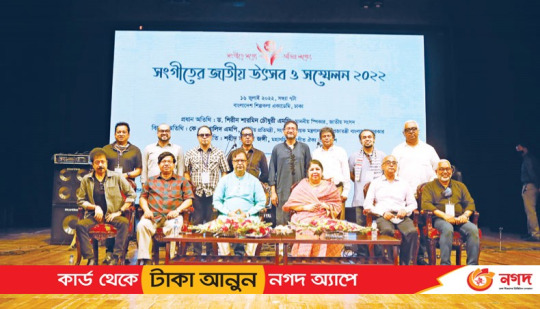
View On WordPress
#Bangla Online News#Bangladesh Latest News#Bangladesh News#Bangladesh Newspaper#Bangladeshi Newspapers#BD English Newspapers#BD Newspapers#Daily New Age#Daily New Age BD#Latest Bangladesh News#Leading English Daily among Bangladesh Newspapers#Most Popular Daily Newpaper in Bangladesh#Most Popular English Daily Newpaper in Bangladesh#Most Popular Outspoken English Daily Newpaper in Bangladesh#Most trusted Bangladesh Newspaper#New Age#New Age Bangladesh Newspaper#New Age BD#The Daily New Age#The Daily New Age BD#The New Age#The New Age BD
0 notes
Text
Thor hammers box office
Thor hammers box office
Poster of Thor: Love and Thunder.— IMDB
Marvel’s latest superhero instalment ‘Thor: Love and Thunder’ enjoyed a summer blockbuster debut, hammering competition to top this weekend’s North American box office with an estimated $143 million haul, industry watcher Exhibitor Relations reported Sunday.
‘This is another excellent Marvel opening for a series that started in 2011 and has grown with each…

View On WordPress
#Bangla Online News#Bangladesh Latest News#Bangladesh News#Bangladesh Newspaper#Bangladeshi Newspapers#BD English Newspapers#BD Newspapers#Daily New Age#Daily New Age BD#jurassic world#Latest Bangladesh News#Leading English Daily among Bangladesh Newspapers#Most Popular Daily Newpaper in Bangladesh#Most Popular English Daily Newpaper in Bangladesh#Most Popular Outspoken English Daily Newpaper in Bangladesh#Most trusted Bangladesh Newspaper#New Age#New Age Bangladesh Newspaper#New Age BD#The Daily New Age#The Daily New Age BD#The New Age#The New Age BD
0 notes
Text
BB recognises Premier Bank for sustainable financing
BB recognises Premier Bank for sustainable financing
Premier Bank deputy managing director and chief financial officer Sayed Abul Hashem receives a certificate of recognition from Bangladesh Bank governor Fazle Kabir in a program at Bangladesh Bank, recently. – Press release photo.
Bangladesh Bank has recognised The Premier Bank Limited as one of the best sustainable financial institutions in Bangladesh, said a press release.
Bangladesh Bank…
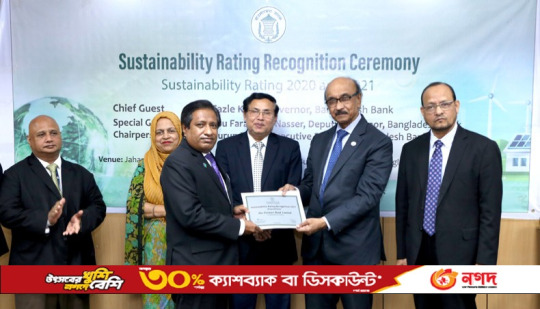
View On WordPress
#Bangla Online News#Bangladesh Latest News#Bangladesh News#Bangladesh Newspaper#Bangladeshi Newspapers#BD English Newspapers#BD Newspapers#Daily New Age#Daily New Age BD#Featured#Latest Bangladesh News#Leading English Daily among Bangladesh Newspapers#Most Popular Daily Newpaper in Bangladesh#Most Popular English Daily Newpaper in Bangladesh#Most Popular Outspoken English Daily Newpaper in Bangladesh#Most trusted Bangladesh Newspaper#New Age#New Age Bangladesh Newspaper#New Age BD#The Daily New Age#The Daily New Age BD#The New Age#The New Age BD
0 notes
Text
Transparency in financial statements needed to attract FDI: BIDA chief
Transparency in financial statements needed to attract FDI: BIDA chief
Institute of Chartered Accountants of Bangladesh president Md Shahadat Hossain and Bangladesh Investment Development Authority executive member (international investment promotion) Mohsina Yasmin exchange documents at the BIDA premises in the capital Dhaka on Tuesday. BIDA executive chairman Md Sirazul Islam was present as chief guest. Among others, ICAB vice-president Fouzia Haque, BIDA director…
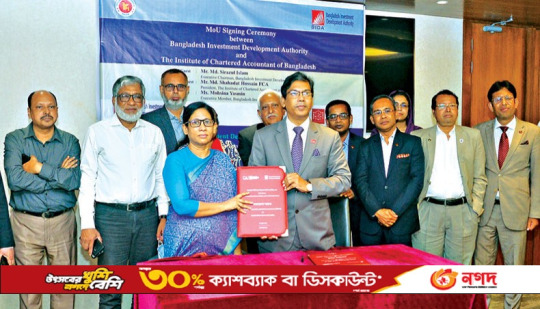
View On WordPress
#Bangla Online News#Bangladesh Latest News#Bangladesh News#Bangladesh Newspaper#Bangladeshi Newspapers#BD English Newspapers#BD Newspapers#Daily New Age#Daily New Age BD#Featured#Latest Bangladesh News#Leading English Daily among Bangladesh Newspapers#Most Popular Daily Newpaper in Bangladesh#Most Popular English Daily Newpaper in Bangladesh#Most Popular Outspoken English Daily Newpaper in Bangladesh#Most trusted Bangladesh Newspaper#New Age#New Age Bangladesh Newspaper#New Age BD#The Daily New Age#The Daily New Age BD#The New Age#The New Age BD
0 notes
Text
Environmental disaster feared after Sitakunda depot fire
Environmental disaster feared after Sitakunda depot fire
The surrounding areas of BM Container Depot under Sitakunda in Chattogram may face severe environmental disaster due to chemical spread from the spot despite the deadly fire being put out.
Firefighters and the Bangladesh army brought the fire under control after 65 hours of frantic effort and it took more than 95 hours to douse the devastating fire completely.
As the fire shattered about…

View On WordPress
#Bangla Online News#Bangladesh Latest News#Bangladesh News#Bangladesh Newspaper#Bangladeshi Newspapers#BD English Newspapers#BD Newspapers#Daily New Age#Daily New Age BD#Featured#Latest Bangladesh News#Leading English Daily among Bangladesh Newspapers#Most Popular Daily Newpaper in Bangladesh#Most Popular English Daily Newpaper in Bangladesh#Most Popular Outspoken English Daily Newpaper in Bangladesh#Most trusted Bangladesh Newspaper#New Age#New Age Bangladesh Newspaper#New Age BD#The Daily New Age#The Daily New Age BD#The New Age#The New Age BD
0 notes
Text
Dhaka ranks 2nd in list of most polluted cities with 190 AQI score
Dhaka ranks 2nd in list of most polluted cities with 190 AQI score
This undated UNB photo shows the view of Dhaka’s air pollution.
Air pollution still remains one of the top most challenges for Bangladesh — its capital has been ranked as the second most polluted city in the world.
On Wednesday, Dhaka’s air quality index was recorded at 190 at 9:00am.
India’s Delhi and Kuwait’s Kuwait City occupied the first and third spots, with AQI scores of 257 and 158,…
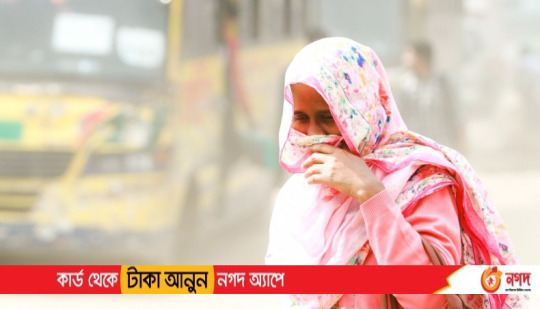
View On WordPress
#Bangla Online News#Bangladesh Latest News#Bangladesh News#Bangladesh Newspaper#Bangladeshi Newspapers#BD English Newspapers#BD Newspapers#Daily New Age#Daily New Age BD#Featured#Latest Bangladesh News#Leading English Daily among Bangladesh Newspapers#Most Popular Daily Newpaper in Bangladesh#Most Popular English Daily Newpaper in Bangladesh#Most Popular Outspoken English Daily Newpaper in Bangladesh#Most trusted Bangladesh Newspaper#New Age#New Age Bangladesh Newspaper#New Age BD#The Daily New Age#The Daily New Age BD#The New Age#The New Age BD
0 notes
Photo
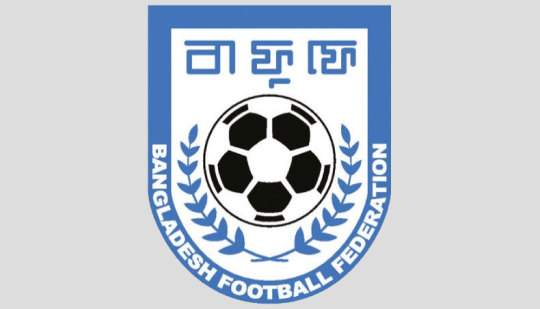
Football clubs seek time to pay players Bangladesh Leading League football golf equipment on Monday sought far more time from the Bangladesh Soccer Federation to attain a concrete proposal to locate the option around players’ deal and payment.
#Bangla Online News#Bangladesh Latest News#Bangladesh News#Bangladesh Newspaper#Bangladeshi Newspapers#BD English Newspapers#BD Newspapers#clubs#Daily New Age#Daily New Age BD#Football#Latest Bangladesh News#Leading English Daily among Bangladesh Newspapers#Most Popular Daily Newpaper in Bangladesh#Most Popular English Daily Newpaper in Bangladesh#Most Popular Outspoken English Daily Newpaper in Bangladesh#Most trusted Bangladesh Newspaper#New Age#New Age Bangladesh Newspaper#New Age BD#pay#Players#seek#The Daily New Age#The Daily New Age BD#The New Age#The New Age BD#Time
0 notes
Photo
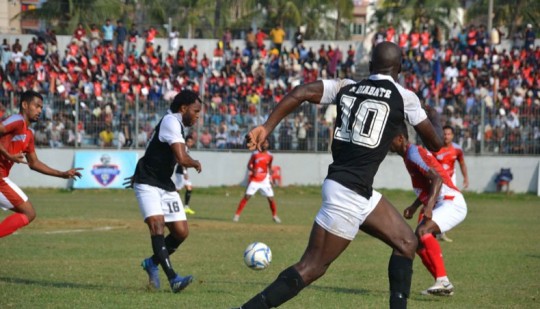
Abahani, Kings lose in action-filled day Upset was the order of the day in the Bangladesh Premier League Football on Saturday as both the title favourites Bashundhara Kings and Abahani Limited lost their respective matches.
#Abahani#actionfilled#Bangla Online News#Bangladesh Latest News#Bangladesh News#Bangladesh Newspaper#Bangladeshi Newspapers#BD English Newspapers#BD Newspapers#Daily New Age#Daily New Age BD#day#Kings#Latest Bangladesh News#Leading English Daily among Bangladesh Newspapers#lose#Most Popular Daily Newpaper in Bangladesh#Most Popular English Daily Newpaper in Bangladesh#Most Popular Outspoken English Daily Newpaper in Bangladesh#Most trusted Bangladesh Newspaper#New Age#New Age Bangladesh Newspaper#New Age BD#The Daily New Age#The Daily New Age BD#The New Age#The New Age BD
0 notes
Photo

Saif secure third win Saif Sporting Club registered their 3rd earn of the league when they defeat Muktijoddha Sangsad Krira Chakra 2- in their fourth match of the Bangladesh Premier League at the Sheikh Fazlul Haque Mani Stadium in Gopalganj on Tuesday.
#Bangla Online News#Bangladesh Latest News#Bangladesh News#Bangladesh Newspaper#Bangladeshi Newspapers#BD English Newspapers#BD Newspapers#Daily New Age#Daily New Age BD#Latest Bangladesh News#Leading English Daily among Bangladesh Newspapers#Most Popular Daily Newpaper in Bangladesh#Most Popular English Daily Newpaper in Bangladesh#Most Popular Outspoken English Daily Newpaper in Bangladesh#Most trusted Bangladesh Newspaper#New Age#New Age Bangladesh Newspaper#New Age BD#Saif#secure#The Daily New Age#The Daily New Age BD#The New Age#The New Age BD#Win
0 notes
Photo

Abahani secure 2nd win Six-time champions Abahani Limited secured their next acquire of the league when they defeated Rahmatganj Muslim Mates Culture by 1- in their third Bangladesh Premier League match at the Bangabandhu National Stadium on Sunday.
#2nd#Abahani#Bangla Online News#Bangladesh Latest News#Bangladesh News#Bangladesh Newspaper#Bangladeshi Newspapers#BD English Newspapers#BD Newspapers#Daily New Age#Daily New Age BD#Latest Bangladesh News#Leading English Daily among Bangladesh Newspapers#Most Popular Daily Newpaper in Bangladesh#Most Popular English Daily Newpaper in Bangladesh#Most Popular Outspoken English Daily Newpaper in Bangladesh#Most trusted Bangladesh Newspaper#New Age#New Age Bangladesh Newspaper#New Age BD#secure#The Daily New Age#The Daily New Age BD#The New Age#The New Age BD#Win
0 notes